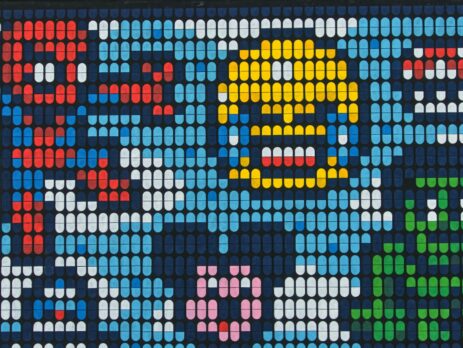Pixel Perfect: Hiring Tips for Skilled Pixel Artists
In the realm of digital art, pixel art holds a unique and nostalgic position, evoking the early days of computer and video game graphics. This distinctive style, characterized by its use of individual pixels as the primary unit of composition, requires not only creativity but also precision and technical skill. As such, hiring a skilled pixel artist can be a crucial decision for projects that aim for a retro or stylized visual approach.
Understanding the nuances of pixel art is essential for recruiters and project managers. It’s not just about assessing basic artistic skills but also about recognizing the specific competencies that make a great pixel artist. These include a strong grasp of color theory, the ability to work within strict limitations, and meticulous attention to detail.
However, the process of hiring a pixel artist can be daunting. From identifying the right talent to assessing their technical skills and artistic flair, each step is critical. This guide aims to streamline this process, offering practical tips and insights to help you find and hire the best pixel artists for your project.
Firstly, it’s important to know where to look. Platforms dedicated to digital art and gaming, as well as freelance job boards, are good starting points. Engaging with communities on social media and forums can also lead to discovering talented artists who might not actively be looking for work but are open to the right opportunities.
Once you’ve identified potential candidates, the next step is to evaluate their portfolios. A strong pixel art portfolio should not only display technical skill but also versatility in style and a deep understanding of the medium’s constraints and possibilities. Look for artists whose portfolios demonstrate a range of projects and show an ability to adapt their style to suit different themes and requirements.
Interviewing candidates is another pivotal step. This is your opportunity to understand their creative process, how they overcome challenges specific to pixel art, and their ability to collaborate on projects. Questions should delve into their experience with pixel-specific software and their approach to maintaining the aesthetic integrity of pixel art in various applications.
Technical tests can also be beneficial. Providing a small project brief during the hiring process can help you assess not only the final product but also the artist’s workflow and problem-solving skills. This can be crucial in understanding how they will handle the specifics of a larger project.
Understanding the market rates and how to structure a fair compensation package is crucial. Resources like how to know if your salary is competitive can provide valuable insights into crafting an offer that is attractive to top talents.
Once hired, integrating the artist into your team and project workflow smoothly is essential. They should be given clear guidelines about the project’s vision and their role within it. Tools and resources such as tips for managing a remote workforce can be incredibly helpful if the artist is working remotely.
Finally, fostering a long-term relationship with the artist can benefit future projects. Engage them in regular feedback sessions and provide opportunities for professional growth. Articles like 10 ways to recognize employees can offer ideas on how to keep your team motivated and committed.
In conclusion, hiring a skilled pixel artist involves a blend of artistic insight, technical scrutiny, and strategic planning. By following these tips, you can enhance your chances of finding a pixel artist who not only meets your project’s requirements but also contributes to its ultimate success.
Most Asked Questions About Hiring Skilled Pixel Artists
- What are the essential skills to look for in a pixel artist?
- How can I assess a pixel artist’s portfolio effectively?
- What interview questions should I ask a pixel artist?
- Are there specific tools or software that pixel artists must be proficient in?
- How do I negotiate contracts and compensation with pixel artists?
- What are common challenges in working with pixel artists and how can they be addressed?
- How can I integrate a pixel artist into my existing team?
What are the essential skills to look for in a pixel artist?
When hiring a pixel artist, several core skills are crucial for ensuring they can deliver high-quality work that aligns with your project’s needs. First and foremost, a strong understanding of color theory is essential. Pixel art is often defined by its limited palettes, and an artist must know how to choose and apply colors to create visually appealing designs.
Secondly, pixel artists need to have excellent spatial awareness. This skill is vital as pixel art requires manipulating small-scale images where each pixel counts. The artist must be able to envision how individual pixels contribute to the overall composition.
Attention to detail is another critical skill. Pixel art demands precision since the clarity of the image depends heavily on how each pixel is placed. Artists must be meticulous and patient, qualities that ensure each piece of the artwork is purposefully crafted.
Creativity and the ability to adapt to different artistic styles are also important. While pixel art has a distinctive style, the artist should be capable of tweaking their approach to match the specific tone and style of a project.
Proficiency in pixel art-specific software is a must. Tools like Adobe Photoshop, which offers features tailored for pixel art, are commonly used in the industry. Familiarity with these tools ensures the artist can efficiently work and implement changes based on project feedback.
Problem-solving skills are essential, especially when working within the constraints of pixel art. Artists must be able to creatively overcome limitations related to resolution and color palettes to deliver a product that meets the project’s artistic vision.
Communication skills cannot be overlooked. A pixel artist must be able to clearly understand project requirements and collaborate effectively with other team members, ensuring their artistic vision aligns with the overall project goals.
Time management is crucial, particularly in a fast-paced work environment. The ability to manage deadlines and deliver work on time is critical in maintaining project schedules and budget.
An understanding of animation is often beneficial, especially for projects that involve motion in pixel art. Knowledge of basic animation principles can be a significant advantage in such cases.
Lastly, a passion for pixel art and a strong portfolio that showcases a range of projects and styles can indicate a dedicated and versatile artist. A portfolio not only reflects past work but also the artist’s potential for future projects.
How can I assess a pixel artist’s portfolio effectively?
Assessing a pixel artist’s portfolio effectively requires a keen eye for detail and an understanding of the nuances of pixel art. Start by looking for diversity in their work. A varied portfolio that includes different styles, themes, and project types suggests a versatile artist capable of adapting to new challenges.
Focus on the quality of the pixel art. Look for clean, crisp edges and consistent use of color palettes. Good pixel art should not have stray pixels or color bleeding, as precision is key in this medium.
Consider the complexity of the projects in the portfolio. Projects that show complex scenes or characters can indicate a higher skill level. Also, note how the artist handles different scales of pixel art, from small icons to large scenes, as this demonstrates their range of skills.
Pay attention to the artist’s ability to convey emotion and storytelling through their art. Pixel art, despite its simplicity, should be able to evoke a response and convey a clear message or story.
Check for any interactive or animated works. Since pixel art is often used in games and interactive media, any experience in these areas should be considered a plus.
Read any testimonials or case studies included in the portfolio. Feedback from previous clients can provide insights into the artist’s work ethic and professionalism.
Assess the presentation of the portfolio itself. A well-organized and professionally presented portfolio can reflect the artist’s seriousness and attention to detail.
Look for evidence of problem-solving. Examples where the artist has had to adhere to strict limitations or overcome significant challenges can demonstrate their ability to work within typical constraints of pixel art.
Consider the artist’s involvement in the pixel art community. Participation in forums, competitions, or exhibitions can indicate a commitment to their craft and ongoing professional development.
Finally, ensure the portfolio is up-to-date. A current portfolio shows that the artist is actively developing their skills and staying relevant in the field.
What interview questions should I ask a pixel artist?
Interviewing a pixel artist provides a deeper insight into their skills, work ethic, and suitability for your project. Start with questions about their professional background and experience in pixel art. Ask about the types of projects they have worked on and their favorite pixel art assignments.
Inquire about their creative process. Understanding how they approach a new project from concept to completion can give you an idea of their work style and ability to manage tasks.
Discuss the tools and software they prefer for pixel art. This not only informs you about their proficiency but also how well they can integrate with your existing tools and workflows.
Ask about a time they faced a significant challenge in their pixel art career and how they overcame it. This can highlight their problem-solving skills and resilience.
Question their experience with deadlines and how they manage time-sensitive projects. This is crucial for projects with tight timelines.
Explore their willingness to adapt to different styles or the specific needs of your project. Flexibility is important in collaborative environments.
Ask for their thoughts on the future of pixel art and their place within it. This can reveal their passion and commitment to the art form.
Inquire about their experience with team projects and how they handle feedback and revisions. This is important for collaborative and iterative work environments.
Discuss any additional skills they might bring to the table, such as animation or game design, which could be beneficial for your project.
Finally, ask why they are interested in your project and what they can offer. This helps gauge their enthusiasm and alignment with your project’s goals.

Are there specific tools or software that pixel artists must be proficient in?
Proficiency in specific tools and software is crucial for pixel artists to efficiently create and manipulate their artwork. Adobe Photoshop is a staple in the industry, known for its robust features that support pixel art, including grid systems and pixel-perfect editing. Learning resources like Adobe’s guide on pixel-perfect illustrations can be invaluable.
Another essential tool is Aseprite, which is specifically designed for pixel art. It offers features like onion skinning, sprite sheet generation, and an intuitive palette management system, making it a favorite among pixel artists.
Pyxel Edit is popular for tileset creation, which is important for game development. Its tools allow artists to create seamless patterns and tiles, simplifying the process of designing complex game backgrounds.
GraphicsGale is another tool that, while less known, offers powerful animation capabilities, making it useful for artists involved in creating pixel art animations.
For those involved in game development, understanding the integration of pixel art with game engines like Unity or Unreal can be beneficial. These platforms often have specific requirements and tools for importing and managing pixel art assets.
Knowledge of tile mapping software, such as Tiled, can also be advantageous. These tools help in designing levels and environments by arranging tiles to create playable maps.
Experience with vector software like Adobe Illustrator can also be useful, especially when pixel art needs to be integrated with other graphic styles within a project.
Understanding the basics of coding can be a plus, especially in environments where the artist may need to collaborate closely with developers. Languages like HTML5 and JavaScript can be relevant, especially when working on web-based projects.
Finally, familiarity with project management and collaboration tools such as Slack, Trello, or Asana can be helpful in a team environment to keep projects on track and facilitate communication.
While not all pixel artists may be proficient in all these tools, a broad understanding and the ability to learn new software quickly are important traits that can significantly enhance an artist’s effectiveness in various projects.
How do I negotiate contracts and compensation with pixel artists?
Negotiating contracts and compensation with pixel artists requires a clear understanding of industry standards and the value of the work being commissioned. Start by researching typical rates for pixel art, which can vary based on the complexity of the work and the artist’s experience. Resources like how to know if your salary is competitive can provide useful benchmarks.
Discuss the scope of the project in detail with the artist to ensure both parties have a clear understanding of the expectations. This includes deadlines, revisions, and any specific requirements that might affect the workload.
Consider the payment structure. Some artists prefer a flat rate, while others might work on an hourly basis. Decide what works best for the project and the budget. In some cases, a combination of a lower flat rate with royalties from the project’s profits can be appealing, especially for indie game projects.
Ensure that the contract includes provisions for revisions. Specify how many revisions are included and what happens if the project scope changes significantly after work has begun.
Discuss copyright ownership and usage rights. It’s important to determine whether the artist retains any rights to their work or if all rights are transferred to you upon completion. This can affect the artist’s compensation, especially if they are giving up all future claims to the work.
Include a kill fee in the contract. This is a fee paid to the artist if the project is canceled through no fault of their own, compensating them for the work completed up to that point.
Be transparent about the budget constraints and be open to negotiation. Artists appreciate honesty and are often willing to work with clients to find a mutually beneficial agreement.
Consider offering non-monetary benefits, such as exposure or long-term collaboration opportunities, which can be valuable to artists looking to build their careers.
Always have a written contract in place before work begins. This protects both parties and ensures there is a clear agreement on all aspects of the project.
Finally, be respectful and professional in your negotiations. Building a good relationship with an artist can lead to more successful projects and collaborations in the future.

What are common challenges in working with pixel artists and how can they be addressed?
Working with pixel artists, like any specialized profession, comes with its set of challenges. One common issue is communication gaps, especially if the artist works remotely. Regular updates, clear project briefs, and the use of collaborative tools can help bridge these gaps.
Another challenge is the misunderstanding of the time and effort involved in creating high-quality pixel art. Educating your team on the process can foster appreciation and realistic expectations.
Technical limitations such as color palette restrictions and pixel resolution can also pose challenges. Early discussion and planning can help in setting feasible goals and choosing the right tools for the project.
Artistic differences may arise, particularly in terms of creative vision. Having a detailed style guide and clear examples of what is expected can minimize these issues.
Project scope creep is another potential challenge. Defining clear project boundaries and deliverables from the start can prevent this.
Revisions can become a point of contention if not managed properly. Establishing a clear revision policy in the contract can help manage expectations on both sides.
Delays in delivery can impact project timelines. Setting up a realistic timeline with buffer periods for unexpected delays can mitigate this risk.
Cost can also become an issue, especially if the project scope is not clearly defined. Transparent discussions about budget and regular check-ins can help keep the project on track financially.
Finally, integration of pixel art with other project elements can sometimes be challenging. Ensuring that the artist is involved in discussions about the overall project can help ensure a cohesive design.
Addressing these challenges requires a proactive approach and open communication. By anticipating potential issues and discussing them openly with your pixel artist, you can ensure a smooth and successful collaboration.
How can I integrate a pixel artist into my existing team?
Integrating a pixel artist into an existing team involves several steps to ensure seamless collaboration and mutual understanding. Start by providing a comprehensive onboarding process that includes introductions to team members, an overview of project goals, and an explanation of how their role fits into the larger project.
Establish clear communication channels. Whether it’s regular meetings, emails, or a project management tool, make sure the artist knows how to communicate with the team and who to reach out to with questions.
Provide all necessary resources and access to tools from the start. This includes software, files, and any other materials they need to do their job effectively.
Set clear expectations regarding deadlines, deliverables, and the feedback process. This helps prevent misunderstandings and ensures that everyone is on the same page.
Encourage collaboration. Invite the artist to team meetings and brainstorming sessions. Their unique perspective can add valuable insights to the project.
Offer support and guidance, especially if the artist is unfamiliar with certain aspects of the project or company culture. A mentor or point of contact can be beneficial in this regard.
Recognize their work and contributions. Positive reinforcement can boost morale and encourage a sense of belonging.</p
Monitor the integration process and solicit feedback from both the pixel artist and the team. This can help identify any issues early on and allow for adjustments to be made promptly.
Provide training if necessary. If there are specific tools, processes, or systems that the artist needs to use, consider offering training sessions to get them up to speed.
Finally, foster a culture of respect and inclusion. Ensure that all team members appreciate the unique skills and perspectives that the pixel artist brings to the table, promoting a harmonious and productive work environment.
Conclusion
Hiring a skilled pixel artist can significantly enhance the visual appeal and success of your projects, especially those requiring a unique, retro aesthetic. By understanding the essential skills to look for, effectively assessing portfolios, asking the right interview questions, and being proficient in the necessary tools and software, you can make informed hiring decisions that lead to successful collaborations.
Negotiating fair contracts and compensation, addressing common challenges, and integrating artists into existing teams are also crucial steps in fostering a productive working relationship. Each of these elements requires careful consideration and planning.
Remember, the goal is not just to hire a skilled artist but to create an environment where they can thrive and contribute to their fullest potential. This involves continuous learning, adaptation, and respect for the art form and the artist.
By following the guidelines and tips provided in this comprehensive guide, you are well-equipped to navigate the complexities of hiring and working with pixel artists. Whether for video games, mobile apps, or digital media, the right pixel artist can bring invaluable creativity and impact to your projects.
For further reading on managing creative teams and enhancing your workplace, consider exploring additional resources such as using a staffing agency and how to become an effective remote manager. Specifically, icreatives staffing and creative staffing agencies can offer tailored solutions and expert guidance to help you navigate the complexities of hiring and managing creative talent effectively.
Additionally, staying informed about industry trends and best practices through platforms like Adobe’s Discover Pixel Art can provide ongoing inspiration and education, helping you keep your projects innovative and competitive.
Ultimately, the success of hiring and working with a pixel artist lies in the mutual understanding and collaboration between the artist and the organization. It’s about creating a partnership where both parties feel valued and motivated to produce their best work.
Investing time and resources into this process not only enhances the quality of your projects but also contributes to a more vibrant, creative, and productive workplace. So, embark on this journey with confidence, knowing that you have the knowledge and tools to succeed.
Thank you for exploring this guide on hiring skilled pixel artists. May your endeavors in the digital art world be fruitful and inspiring!
In today’s competitive market, finding the right creative and marketing expert can be a challenge. But with icreatives, you’re in experienced hands. With 37 years in staffing and a track record of matching more than 10,000 employees to over 1,000 companies worldwide, we know how to connect you with the best. Plus, you only pay if you hire—there’s no risk, only results.
Ready to find your perfect creative or marketing expert? HIRE WITH ICREATIVES today!











